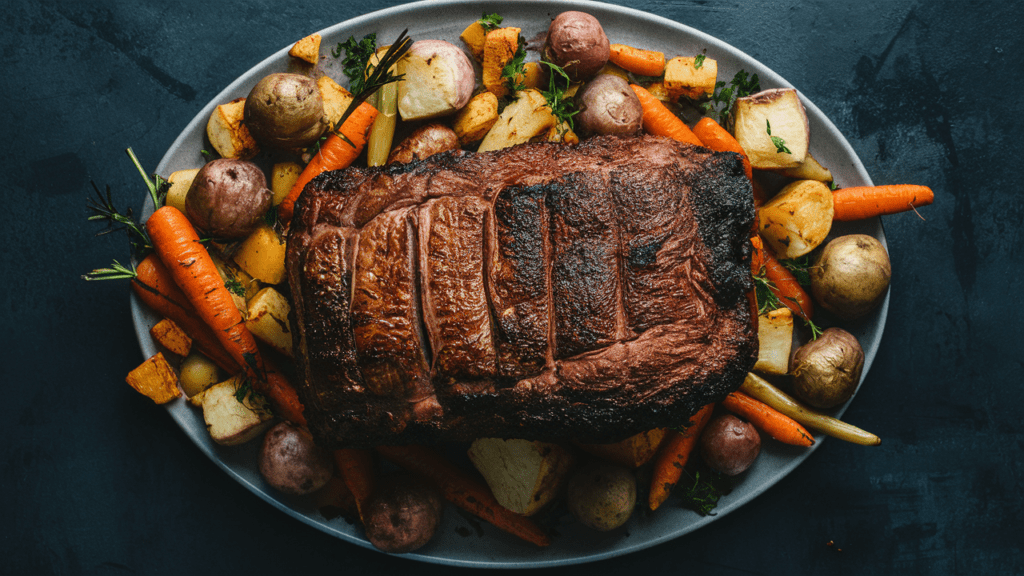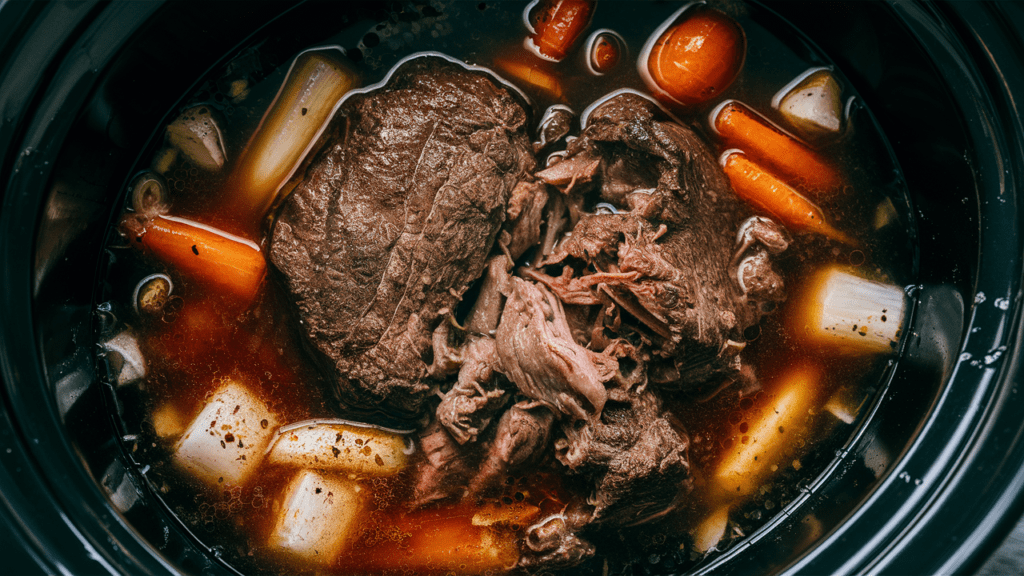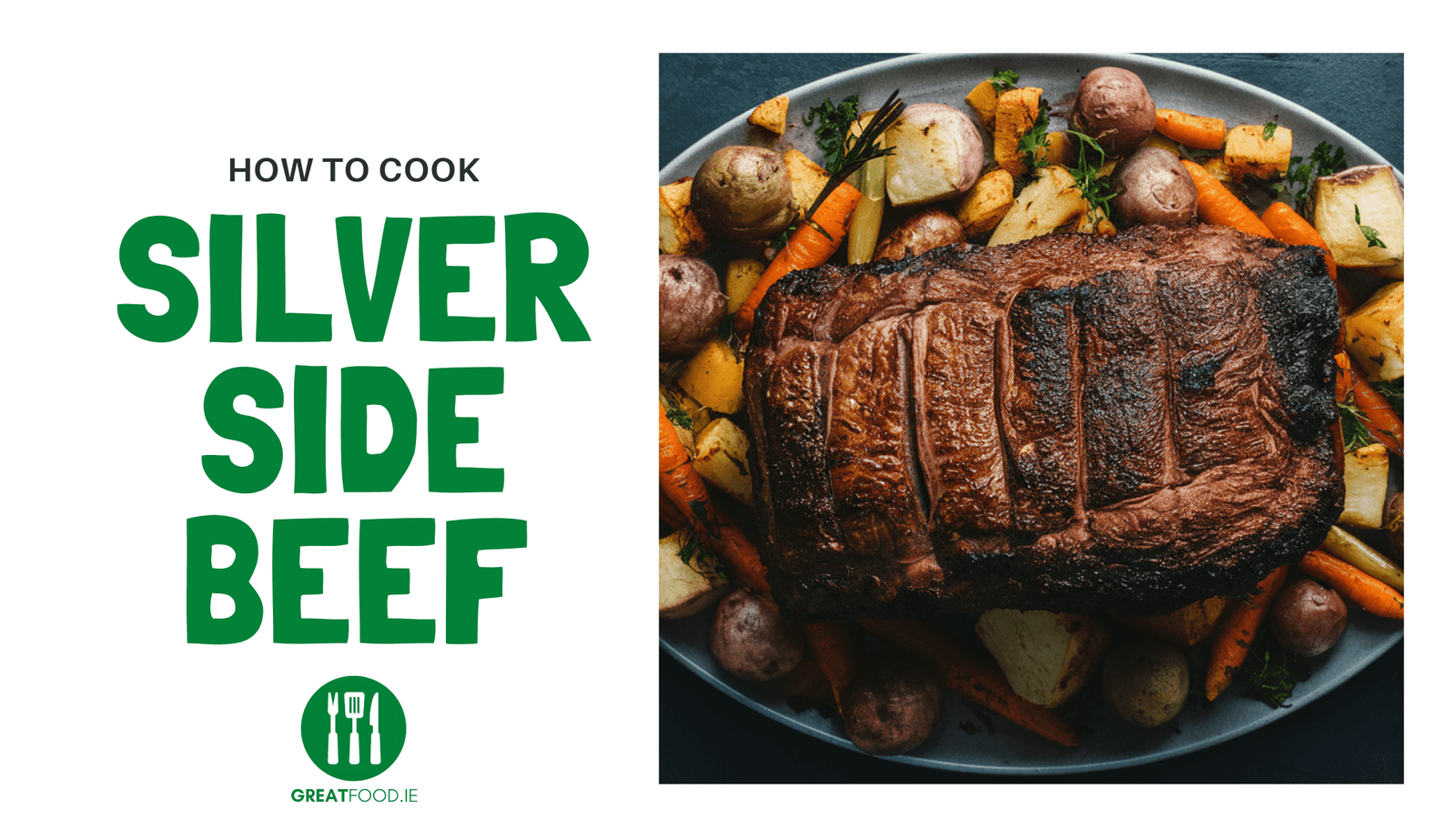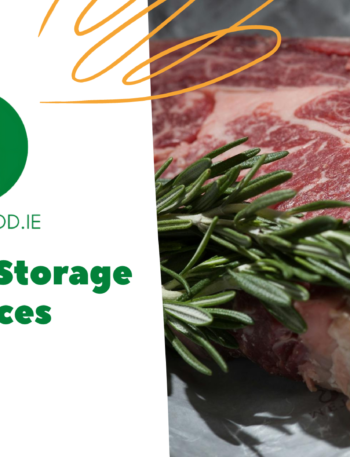How to Cook Silverside Beef? Silverside beef, a popular cut in Ireland and the UK, is prized for its lean texture and versatility in the kitchen. This guide explores the best methods for cooking this flavorful joint, from traditional roasting to slow-cooking techniques that yield tender, mouthwatering results.

What is Silverside Beef?
Silverside beef is a lean, flavorful cut from the hindquarter of cattle, popular in Ireland, the UK, and other Commonwealth countries. Named for the silvery membrane covering its internal surface, this versatile cut is prized for its affordability and adaptability in various cooking methods. In Irish and British cuisine, silverside is often used for roasting joints, braising steaks, or as a key ingredient in traditional dishes like corned beef.
This guide will equip readers with essential knowledge about selecting, preparing, and cooking silverside beef, ensuring they can confidently create delicious meals using this staple cut. From classic roasting techniques to innovative slow-cooking methods, readers will discover how to maximize the flavor and tenderness of silverside beef, making it a go-to option for family dinners and special occasions alike.
Silverside Beef Explained
- Comes from the outside of the rear leg, situated between the knuckle and the topside.
- Named after the silver wall of connective tissue on its side, which is removed before cooking.
- Called “outside” or “bottom round” in most parts of the U.S.
- Similar to topside beef, but with a coarser grained texture.
- Leaner than brisket, making it a healthier alternative for corned beef.
- Often used for roasting joints, braising steaks, or diced for slow-cooking dishes.
- Traditionally used to make salt beef in some regions.
- Popular for making biltong in South Africa.
- Requires moist cooking methods like pot-roasting or slow-cooking to ensure tenderness due to its lean nature.
- Rich in protein and low in fat, making it a nutritious choice for health-conscious consumers.
Silverside beef offers a balance of flavor and leanness, making it an excellent choice for those seeking a versatile and relatively healthy beef option for various culinary applications.
Selecting Quality Silverside
When selecting silverside beef, look for cuts with a deep red color and minimal fat marbling, as it’s naturally a lean cut. Choose grass-fed beef for superior flavor and nutritional benefits, which is common in Irish and UK cattle farming practices. Opt for cuts from the superior end of the silverside near the rump, often referred to as ‘corner cut’ or ‘rump corner cut’, for better quality. In Ireland, look for beef with the Bord Bia Quality Mark, which ensures high production standards and traceability. For UK consumers, reputable butchers like Swaledale Butchers offer heritage breed, grass-fed silverside beef that’s dry-aged for over 28 days, enhancing flavor and tenderness. When purchasing, consider the cut’s versatility for various cooking methods, from traditional roasting to slow-cooking, to make the most of this economical and flavorful beef option.
Preparing Silverside for Cooking
To prepare silverside beef effectively, you’ll need a few essential kitchen tools. A sharp knife is crucial for trimming and cutting the meat properly, as a dull blade can ruin a good piece of beef. A cast iron pan is ideal for achieving a perfect crust while maintaining a juicy center, especially for thick-cut steaks. A reliable meat thermometer helps ensure proper doneness, while a timer assists in maintaining consistency when cooking multiple steaks.
Preparation Steps
- Start by removing the silverside from the refrigerator and allowing it to reach room temperature.
- Pat it dry with kitchen paper and season well with fine sea salt.
- If marinating, consider using ingredients like olive oil, herbs (such as thyme and rosemary), and garlic for added flavor. For best results, marinate the beef for at least a few hours or overnight in the refrigerator.
- Before cooking, remove any excess marinade and pat the meat dry to ensure proper browning.

How to Cook Silverside Beef and Cooking Methods
Silverside beef can be prepared using various cooking methods, each offering unique benefits and flavors. Here’s a comprehensive guide to the most popular cooking techniques for this versatile cut:
| Cooking Method | Instructions | Cooking Times and Temperatures |
|---|---|---|
| Oven Roasting | 1. Preheat oven to 180°C (350°F) 2. Season the beef with salt and pepper 3. Place in a roasting tin and cook for 20 minutes per 450g for medium-rare 4. Rest for 15-20 minutes before carving | Medium-rare: 20 minutes per 450g at 180°C (350°F) Medium: 25 minutes per 450g at 180°C (350°F) Well-done: 30 minutes per 450g at 180°C (350°F) |
| Slow Cooking | 1. Brown the beef in a pan 2. Place in slow cooker with vegetables and stock 3. Cook on low for 8-10 hours or high for 4-6 hours 4. Check tenderness with a fork | Low: 8-10 hours High: 4-6 hours |
| Pressure Cooking | 1. Brown the beef in the pressure cooker 2. Add liquid and seasonings 3. Cook at high pressure for 60-75 minutes 4. Allow natural pressure release | 60-75 minutes at high pressure |
| Boiling (Traditional Irish method) | 1. Place beef in a large pot with water and seasonings 2. Bring to a boil, then reduce to a simmer 3. Cook for about 50 minutes per 450g 4. Let rest in the cooking liquid for 20 minutes | 50 minutes per 450g, simmering |
- Oven roasting is a popular method for cooking silverside beef, producing a flavorful crust while maintaining tenderness inside. For best results, use a meat thermometer to check the internal temperature, aiming for 57-60°C (135-140°F) for medium-rare.
- Slow cooking is ideal for tougher cuts like silverside, as the low, slow heat breaks down connective tissues, resulting in incredibly tender meat. This method is perfect for busy households, as it requires minimal hands-on time.
- Pressure cooking offers a quick and efficient way to prepare silverside beef, significantly reducing cooking time while still producing tender results. This method is excellent for those short on time but still wanting a flavorful meal.
- Boiling, particularly popular in traditional Irish cuisine, is a simple method that produces tender, flavorful meat. This technique is often used for corned beef, a popular variation of silverside beef.
Regardless of the cooking method chosen, it’s crucial to let the meat rest after cooking. This allows the juices to redistribute, ensuring a moist and tender final product.
Perfect Pairings: Side Dishes and Sauces
Silverside beef pairs wonderfully with traditional Irish and British side dishes that complement its rich flavor. Colcannon, a classic Irish dish of mashed potatoes with cabbage or kale, is a perfect accompaniment. For a hearty meal, serve the roast with Yorkshire puddings, a quintessential British side. Other popular options include roasted root vegetables, steamed green vegetables, or a simple potato dish like Irish potato bread.
For sauces, a rich gravy made from the beef’s pan drippings is a classic choice. Horseradish sauce provides a zesty contrast to the meat’s flavor – try mixing grated horseradish and apple with crème fraîche for a unique twist. For a summer variation, serve thinly sliced cold roast beef with an anchovy dressing or a simple rocket salad with lemon juice, olive oil, and shaved parmesan. These pairings enhance the silverside’s flavor while maintaining the traditional essence of Irish and British cuisine.
Serving and Storing Silverside
When serving silverside beef, presentation and proper carving are key to enhancing the dining experience. For an attractive presentation, let the roast rest for 15-20 minutes before carving to allow juices to redistribute. Carve the silverside against the grain into thin slices for maximum tenderness. To carve, use a sharp knife and cut perpendicular to the direction of the meat fibers.
For leftovers, store the beef in an airtight container in the refrigerator for up to 3-4 days. When reheating, avoid overcooking to prevent dryness. Gently warm slices in a pan with a bit of beef stock or gravy, or use a low oven setting (around 150°C) and cover with foil to retain moisture. Leftover silverside can also be repurposed for sandwiches, salads, or diced for use in stews or casseroles.

Common Questions and Troubleshooting
Cooking silverside beef can sometimes present challenges. Here are some common questions and troubleshooting tips to help you achieve the best results:
- Why is my silverside beef tough?
- Silverside is naturally lean and can become tough if overcooked or cooked too quickly.
- For tender results, use slow, moist cooking methods like braising or slow-cooking.
- How can I fix overcooked silverside beef?
- Slice it thinly and use it in sandwiches or wraps.
- Shred it and use it in stews, soups, or shepherd’s pie.
- Simmer in broth or sauce to add moisture.
- What’s the best way to ensure tender silverside?
- Cook at a low temperature for a longer time to break down connective tissues.
- Use a meat thermometer to avoid overcooking.
- Let the meat rest after cooking to redistribute juices.
- Can I cook silverside from frozen?
- It’s best to fully thaw silverside before cooking for even results.
- If cooking from frozen, increase cooking time by about 50%.
- How do I know when silverside is cooked?
- Use a meat thermometer to check internal temperature.
- For medium-rare, aim for 57-60°C (135-140°F).
- The meat should be fork-tender when slow-cooked.
Remember, silverside beef benefits from patience and careful cooking. With the right techniques, you can transform this economical cut into a delicious and tender meal.
Key Takeaways and Encouragement
Silverside beef offers a versatile and economical option for home cooks in Ireland and the UK. Its lean nature and rich flavor make it suitable for various cooking methods, from traditional roasting to slow cooking. Key to success is selecting quality meat, proper preparation, and using appropriate cooking techniques to ensure tenderness. Whether you prefer a classic Sunday roast or a hearty slow-cooked meal, silverside can deliver delicious results. Experiment with different marinades, cooking times, and side dishes to find your perfect combination. Remember that patience is often rewarded when cooking this cut, particularly with slow cooking methods that break down tough fibers. Don’t hesitate to try new recipes or share your own experiences and tips with fellow home cooks. With practice and creativity, you can master the art of cooking silverside beef and make it a staple in your culinary repertoire.
Additional Silverside Resources
Here are some useful resources for Irish and UK readers looking to learn more about silverside beef and its preparation:
- Bord Bia (Irish Food Board) – Comprehensive guide to beef cuts, including silverside: https://www.bordbia.ie/meat/cuts/beef-cuts/
- Hugh Phillips Gower Butcher – Information on silverside from a reputable UK butcher: https://bestonlinebutcher.co.uk/product/silverside/
- Gourmet Experts – Source for prime Irish Angus grass-fed silverside beef: https://gourmet-experts.com/en-dk/products/copy-of-prime-irish-angus-grass-fed-topside-1
- Corries On The Farm – Online purchase option for beef silverside roast in the UK: https://corriesonthefarm.co.uk/products/silverside-roast
- Henderson Foodservice – Information on pre-cooked silverside beef products: https://www.henderson-foodservice.com/mckeown-roast-beef-silverside-small-4-x-1kg.html
These resources provide valuable information on selecting, purchasing, and preparing silverside beef, catering specifically to Irish and UK consumers.
Yum








